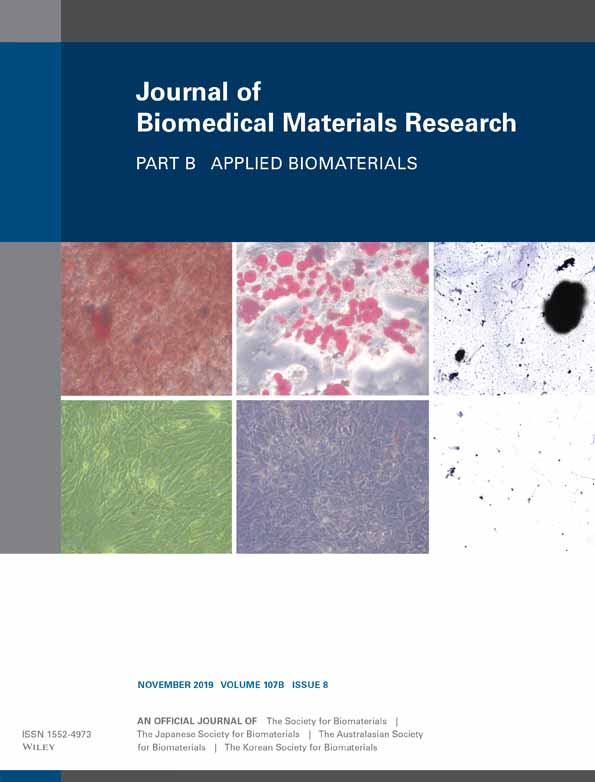In vivo comparison of shape memory polymer foam-coated and bare metal coils for aneurysm occlusion in the rabbit elastase model
Abstract
Shape memory polymer (SMP) foam-coated coils (FCCs) are new embolic coils coated with porous SMP designed to expand for increased volume filling and enhanced healing after implantation. The purpose of this study was to compare chronic aneurysm healing after treatment with SMP FCCs to bare platinum coil (BPC) controls in the rabbit elastase aneurysm model. BPCs or SMP FCCs were implanted in rabbit elastase-induced aneurysms for follow-up at 30 days (n = 10), 90 days (n = 5), and 180 days (n = 12 for BPCs; n = 14 for SMP FCCs). Aneurysm occlusion and histologic healing, including a qualitative healing score, neointima thickness, collagen deposition, and inflammation were compared between the two groups. The mean neointima thickness was significantly greater in groups treated with SMP FCCs for all three time points. Histologic healing scores and collagen deposition quantification suggested that aneurysms treated with SMP FCCs experience more complete healing of the dome by 90 days, but the differences were not statistically significant. More progressive occlusion and recanalization were observed in aneurysms treated with SMP FCCs, but neither difference was statistically significant. Additionally, the SMP foam used in the FCCs was found to degrade faster in the rabbit elastase model than expected based on previous studies in a porcine sidewall aneurysm model. This study suggests that SMP FCCs can promote neointima formation along the aneurysm neck, and may lead to more complete healing of the dome and neck. These findings indicate potential benefits of this device for aneurysm occlusion procedures. © 2019 Wiley Periodicals, Inc. J Biomed Mater Res Part B: Appl Biomater 107B:2466–2475, 2019.
CONFLICT OF INTEREST
Shape Memory Medical, Inc. (SMM) owns the commercial license for clinical vascular embolization application of the technology shown in this work. The authors disclose that Duncan J. Maitland is a founder, board member, and shareholder of SMM. Anthony J. Boyle, Landon D. Nash, and Chung Yeh are or were employed by SMM at the time of this work.




